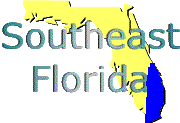| 1.0 | TRAVEL AND TRAFFIC MANAGEMENT |
| 1.5.2 | TSI shall include an Information Access function that allows travelers to access the available information. |
| 1.5.2.5 | Information Access shall provide the capability for travelers to access the TSI information via any of, but not limited to, the following methods: |
| 1.5.2.5(a) | Highway advisory radio. |
| 1.6 | TRAFFIC CONTROL |
| 1.6.0 | ITS shall provide a Traffic Control capability. Traffic Control provides the capability to efficiently manage the movement of traffic on streets and highways. Four functions are provided which are (1) Traffic Flow Optimization, (2) Traffic Surveillance, (3) Control Function, and (4) Provide Information. This will also include control of network signal systems with eventual integration of freeway control. |
| 1.6.2 | Traffic Control shall include a Traffic Surveillance function. |
| 1.6.2.1 | Traffic Surveillance shall include a Vehicle Detection function with the capability of accurately detecting vehicles in a real-time fashion. |
| 1.6.2.1.1 | Vehicle Detection shall include the capability to determine those vehicles that are HOVs. |
| 1.6.2.2 | Traffic Surveillance shall include a Data Collect function to provide the capability to collect data that are needed for determining traffic flow and prediction. |
| 1.6.2.2.1 | Data Collect shall provide the capability to quickly feedback traffic data to the control processes. |
| 1.6.2.3 | Traffic Surveillance shall include an area wide surveillance capability to include several jurisdictions. |
| 1.6.2.3.1 | The area wide surveillance shall gather speed and flow information. |
| 1.6.2.4 | Traffic Control shall provide the capability to acquire detailed traffic measurements at specific locations. |
| 1.6.3 | Traffic Control shall include a Control Function. |
| 1.6.3.3 | The Device Control Function shall provide the capability to exercise control over those devices utilized for traffic control. |
| 1.6.3.3.2 | Device Control shall include the capability to control dynamically traffic signing. |
| 1.6.3.3.3 | Device Control shall include the capability to control freeway ramp metering. |
| 1.6.3.4 | Device Control shall communicate control data to the following devices. |
| 1.6.3.4(b) | Ramp meters. |
| 1.6.3.4(c) | Information signs. |
| 1.7 | INCIDENT MANAGEMENT |
| 1.7.0 | ITS shall include an Incident Management (IM) function. Incident Management will identify incidents, formulate response actions, and support initiation and ongoing coordination of those response actions. Six major functions are provided which are (1) Scheduled Planned Incidents, (2) Identify Incidents, (3) Formulate response Actions, (4) Support Coordinated Implementation of Response Actions, (5) Support Initialization of Response to Actions, and (6) Predict Hazardous Conditions. |
| 1.7.1 | Incident Management shall provide an incident identification function to identify incidents. |
| 1.7.1.1 | The incident identification function shall include the capability to identify predicted incidents. |
| 1.7.1.1.1 | The incident identification function shall use information from the following types of sources, where available, to identify predicted incidents: |
| 1.7.1.1.1(a) | Traffic flow sensors. |
| 1.7.4 | Incident Management shall provide the capability to predict the time and location of hazardous conditions that may cause an incident. |
| 1.8 | TRAVEL DEMAND MANAGEMENT |
| 1.8.0 | Travel Demand Management will generate and communicate management and control strategies that will support and facilitate the implementation of TDM programs, policies and regulations. It consists of two major functions which are (1) Increase Efficiency of Transportation System and (2) Provide Wide Variety of Mobility Options. |
| 1.8.3 | TDM shall include a sensors/control function. |
| 1.8.3.1 | The sensors/control function shall provide the capability to gather information needed for the generation of management and control strategies to include, but not be limited to the, following: |
| 1.8.3.1(b) | Usage levels. |
| | |




